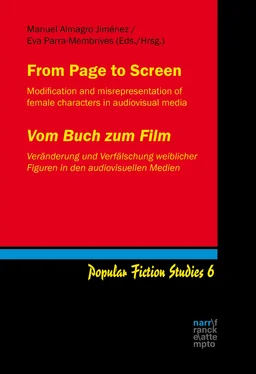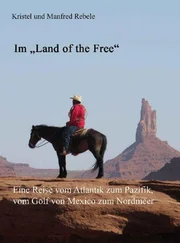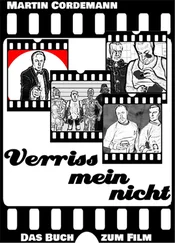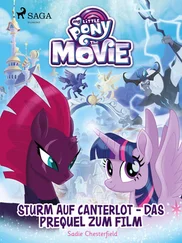Regarding secondary characters, a key aspect of this analysis is precisely that secondary female characters, which abound in the 1934 book, are conspicuously absent from the film2. While it is true that, from a technical point of view, it would be challenging to fit all the adventures that take place in the book into one single feature film, it seems relevant that the film boasts an overbearing presence of male characters3. Such is the case of the fox-hunting scene and the horse race (freely expanded from the chapter “The Day Out”), the tea party at Uncle Albert’s (based on “Laughing Gas,” from which Miss Persimmon is aptly erased), the scenes at the bank (partially based on “The Bird Woman,” where the title character plays a much more fundamental role), and the chimney adventure (inspired by the chimney sweep book character), all of which are dominated by male characters.
As opposed to these, the book presents several chapters in which female characters are on a par with male ones (“Bad Tuesday” and “John and Barbara’s Story”) or even central to the stories (“Miss Lark’s Andrew,” “The Dancing Cow,” “Mrs Corry” and “Christmas Shopping”). When some of these characters do make it to the film, they are not even given speaking roles: Mrs Corry and her two daughters are only shown to be enchanted by Bert’s rhymes; the Bird Woman is only allowed her famous “Tuppence a bag” line; and Mrs Lark, whom Mary Poppins intends to visit but never does, is only present via her dog, which does make an appearance at several points throughout the film.
Downgrading and, in some cases, doing away altogether with these secondary female characters destroys the rather prominent female presence in the book and the feminine atmosphere that serves as the background to many of Mary Poppins’s adventures. Mr Banks’s words when stating that it is a good idea to take the children out of the “sugary, female thinking they get around here all day long” (Disney, Stevenson, 1964: 1:19:40) may serve as a meta-commentary on the very process underlying the production of the film.
What is more, two main features of these secondary female characters in the book are their creativeness and freedom, two qualities that are historically men’s prerogative (Proudfoot, Kay, Koval, 2015): the Red Cow leaves her comfortable life in search of the happiness that dancing grants her (Travers, 2018: 61); the Bird Woman has a very special connection with birds (Travers, 2018: 86); Mrs Corry, Fannie and Annie go out at night on magical errands (Travers, 2018: 102–103); and Maia is a free-spirited and generous girl who goes around wearing “practically no clothes” (Travers, 2018: 143). Also, these characters are diverse in their appearance and qualities, which counters the patriarchally constructed perfection of Mary Poppins. Their absence from the film deprives viewers of diverse models to identify with and prevents them from enjoying the sisterly relations between Mary Poppins and those other women: the cow was “a great friend of my Mother’s” (Travers, 2018: 51); Mary Poppins is good friends with Mrs Corry and talks to her “with most surprising courtesy” (Travers, 2018: 93), joins her and her daughters in their night-time errands (Travers, 2018: 102–103) and, when they say goodbye, “it seemed as if some secret had passed between them” (Travers, 2018: 98); Maia gets thoughtful Christmas presents for her six sisters (Travers, 2018: 146–147) and, when Jane shows her concern about Maia not getting any, Mary Poppins gives her her own brand new gloves (Travers, 2018: 149).
All these stories contribute to creating a poetics of the female quotidian or, as Travers herself put it, the “miracle” of everyday life (Lawson, 2013: 254), that is deliberately elided in the film, leaving both female characters and women spectators without a net of female references and role models. Something similar occurs, for example, in The Little Mermaid . In Hans Christian Andersen’s tale (1837), the mermaid’s grandmother and sisters hold strong bonds with the protagonist and are key to the story: the grandmother gives her wise advice, and the sisters, portrayed in a rather individualised way with their own peculiar tastes and quirks, use the birthday ritual to pass on knowledge of the human world from one another. This not only creates a sense of family routine and everydayness but also reinforces the complicity among the sisters. In Disney’s 1989 film (Musker, Ashman, Clements, Musker, 1989) though, the sisters’ appearance is made merely anecdotal in favour of Ariel’s friendship with Flounder (a male fish), and the grandmother is purged.
Very similarly, in Disney’s Mary Poppins , Jane holds no meaningful relationship with any other female character (except for Mary Poppins), but is clearly attached to both her brother and her father. In contrast, the book portrays a girl interested in other women’s lives and stories. The end of the “Mrs Corry” chapter is enlightening in this sense: while Michael is visibly upset by Mrs Corry, Fannie, Annie and Mary Poppins taking their paper stars to put them up in the sky (Travers, 2018: 102, 103), Jane finds the whole event quite edifying. In her appreciation that, in order to understand what had happened that night, she would need “somebody very much wiser than Michael” (Travers, 2018: 104), the implications are that that person ought to be a woman. In this very brief comment, the book gives readers a glimpse into an unknown tradition of women astronomers that can explain the origins of the universe to her. In this way, the book bypasses “the problems of the alignment of woman with nature when devoid of feminist agency” (Walton, 1997: 100) and avoids drawing “upon essentialist constructions of femininity – as they have been patriarchally defined” (Walter, 1997: 101). It also draws on the figure of the Triple Goddess (Gimbutas, 2001), which represents and connects the ages of woman in Neopaganism: daughter and mother, maiden and crone (Gimbutas, 2001: 42). In a 1965 interview, Travers herself stated: “we [women] have to become wise old crones, carrying the traditions we’ve learned” (Lawson, 2013: 283). All these insights into Jane’s connections with other women and her partaking of this female lineage is also lost in the Disney production.
The disconnection between Jane and the other female characters is best exemplified in the film by the non-existent relationship between her and her mother. Indeed, Mrs Banks epitomises the absent mother figure, such a common trope in Disney films (Worthington, 2009). Interestingly enough, she is the only character in the film who does have meaningful connections with other women: her attendants, Ellen and Mrs Brill, and her group of suffragist friends. However, while the relationship with the former is not sufficiently developed, her relationship with the suffragettes is only shown via her absence, both from the film and her family life, as she is always busy tending to her political duties. Disney’s reimagining of this character from loving and caring mother to suffragette is problematic at best and, although several explanations (including personal, historical and narrative ones) have been provided to explain Disney’s long tradition of absent mothers (Åmström, 2017: 1–5), none of them accounts for the explicit political overtones added in the film. In the book, Mrs Banks is not only present at several points but also performs typically motherly functions, in accordance with Edwardian standards: she is in charge of arranging childcare (Travers, 2018: 4–7, 159); scolds the children (Travers, 2018: 7, 65, 66, 158–159); shows concern for their wellbeing (Travers, 2018: 66); makes the decisions regarding the children’s outings (Travers, 2018: 81–82); soothes and comforts the babies (Travers, 2018: 111–113); and deals with the overall running of the house and knows where things are (Travers, 2018: 13, 153, 158).
Читать дальше












